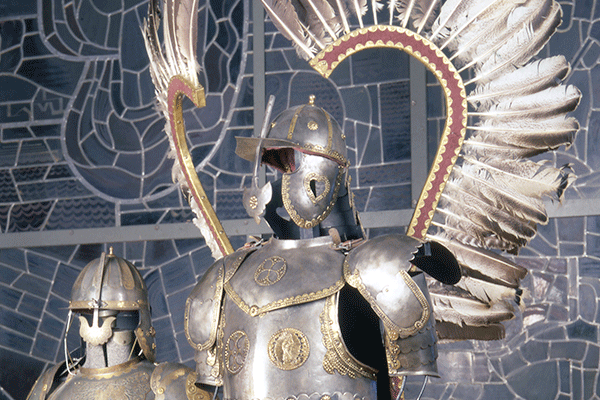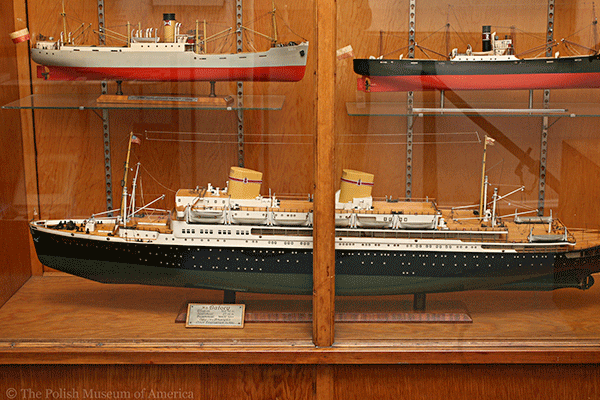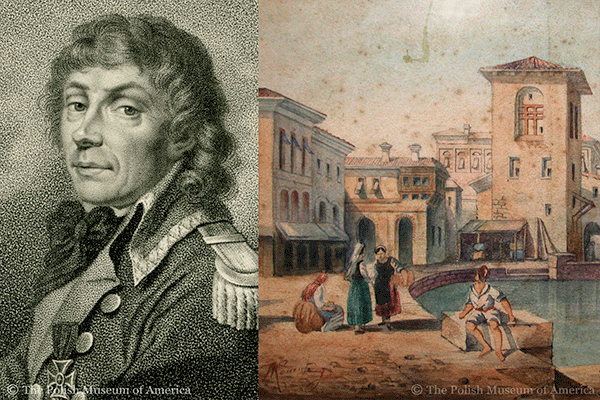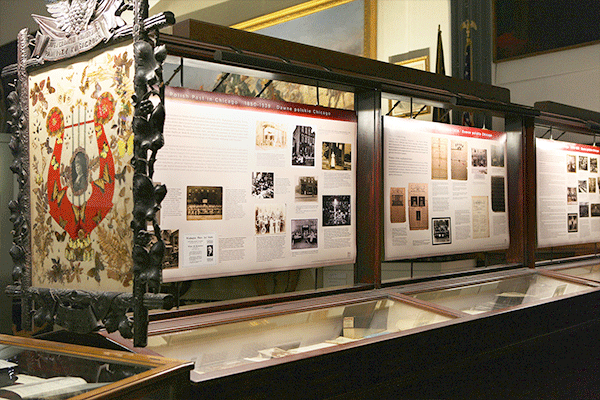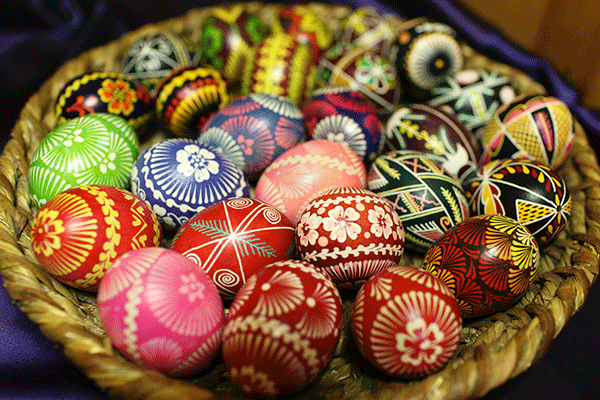The military collection, which constitutes a sizable portion of the Historical Collection, dates from the 19th and 20th centuries, and consists of three basic divisions: the participation of the Poles whenever the United States was at war; the paramilitary organizations of Polonia; and the Polish military formations around the world during World Wars I and II. However, the beginning of the military aspect of the exhibitions in the Great Hall recalls a much earlier event—the victory of the Polish King, Jan III Sobieski, over the Turks at Vienna in 1683. Two relics of the Polish Cavalry’s winged armor are on exhibit. They were produced for the Polish Pavilion at the New York World’s Fair in 1939.
The revolution of the British colonies in America (1775–1782), which resulted in the establishment of the United States of America, is the earliest period of Polish-American cooperation on the battlefield. There is also evidence of Poles participating in the American Civil War, or War of Secession, (1861–1865). This exhibit includes replicas of the Civil War uniforms in the Great Hall—the blue uniform of the 58th Infantry Regiment of New York, and the gray uniform of the 14th Infantry Regiment of Louisiana.
The second division of the military artifacts pertains to paramilitary organizations of Polonia, such as the Polish Falcons Society and the Knights of St. Casimir, which participated, in times of peace, at patriotic manifestations organized on the anniversaries of national events, and at celebrations of religious holy days, especially Good Friday.
The third military division is the largest and contains unique artifacts. A significant part is from the World War I period, the mementos of the Polish Army in France (also known as the Haller’s Army, from the name of the commander, or the Blue Army, for the color of its uniforms) and its soldiers. There is also a large collection of uniforms and mementos, however from World War II.

